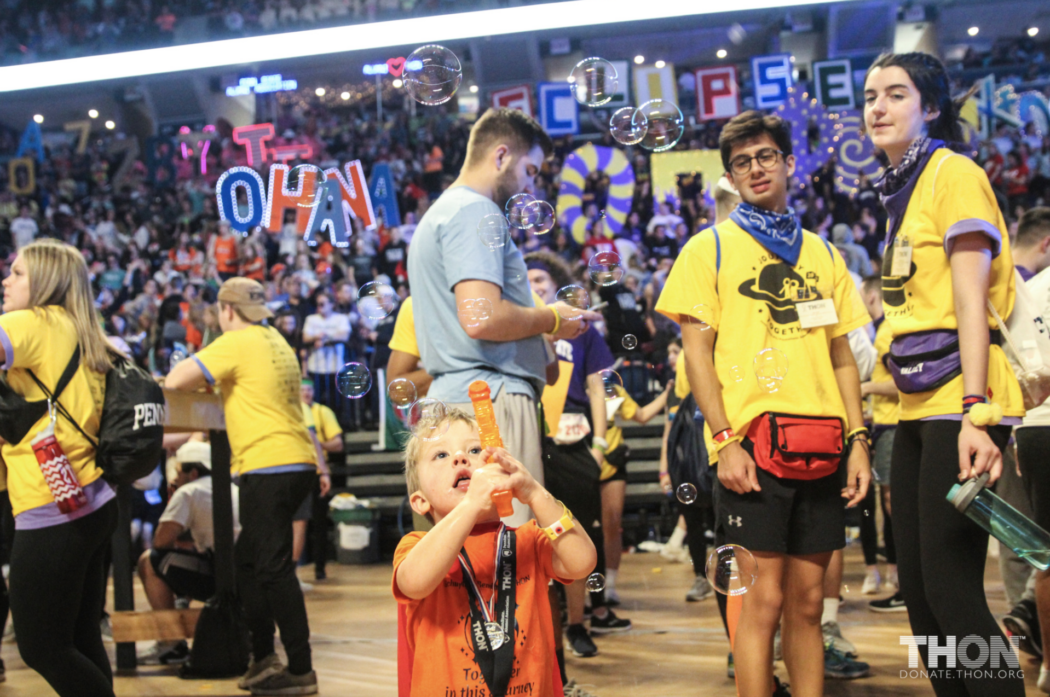One of the best weekends of the year has finally arrived: THON 2021! Throughout this weekend, the entire Penn State community will come together to raise money for the fight against childhood cancer. The 46-hour dance marathon is the culmination of a year-long fundraising effort to benefit the Four Diamonds Fund at Penn State Children’s Hospital.
First organized in 1973, THON has grown into the largest student-run philanthropy event in the world, with over 15,000 student volunteers dedicating their time and energy to give back to the community.
While dance marathons may seem like an odd choice for a fundraiser, in the 70s people had a renewed interest in them after the release of the movie “They Shoot Horses, Don’t They?” in 1969. Centered around a group of individuals competing to win a dance marathon, the film popularized the idea and prompted students at several universities to recreate them into charity events.
At Penn State, THON was first proposed by former Interfraternity Council president Bill Lear in 1973. His original thought was that couples would dance against each other, and the pair that stayed on their feet the longest and raised the most money would win. The first IFC dance marathon was held in the HUB Ballroom; the 30-hour fundraiser had only 78 participants but raised more than $2,000. After its surprising success, the dance marathon became an annual event!
In 1977, the Four Diamonds Fund became the beneficiary of THON’s fundraising effort, and they have remained the sole beneficiary since. The fund honors Christopher Milliard, a 14-year-old who lost his battle with cancer in 1969. His parents created the fund in 1973 to support other families who were battling pediatric cancer.
As time went on and crowds increased, the location of the dance marathon moved from the HUB Ballroom to the White Building. The bigger space held more dancers, participants and spectators, allowing the dance marathon to grow in prominence and participation by other students. Another change in 1979 was that dancers no longer competed against each other. Instead, dancers shared a common goal to remain standing for the entire event.
In the 1980s THON became one of the largest philanthropy events in the world. In 1983, the total fundraising efforts hit six figures for the first time: raising a total of $131,182. In only 11 short years, the marathon had grown in importance and prestige, and it began to sweep the nation as more and more schools set up similar fundraising programs. In 1987, the official title of the dance marathon was changed from The IFC Dance Marathon, to what we all know and love today: THON. At this time, THON was continuing to grow in terms of the number of dancers and volunteers. More and more committees were created to help raise funds, plan and execute the weekend.
By the 1990s, THON officially recognized the impact of the organizations that had a huge hand in its beginning stages, with the marathon becoming known as the Penn State IFC/Panhellenic Dance Marathon. THON broke the million-dollar mark in 1992, raising $1,141,145.38! It was also during the ’90s that the continuing growth of THON caused another location change. In 1999, the marathon found a new home in Rec Hall.
THON has continued to grow and evolve into the event that we all know so well today. The move to its last, and final location change — for now — occurred in 2007, when the Bryce Jordan Center was used to celebrate its 35th anniversary. The capacity was over double that in Rec Hall, allowing even more dancers, participants and volunteers to enjoy the weekend.
Since its creation, THON has continued to grow in importance, and it has cemented its status as the largest student-run philanthropy event in the world. Even with its expansion, THON still stays true to its original mission, “to provide emotional and financial support, spread awareness and ensure funding for critical research – all in pursuit of a cure.”
THON weekend 2021 will take place virtually from 6 p.m. Friday, February 19 until 4 p.m. Sunday, February 21. To watch the live stream, you can go to thon.org/livestream. To donate, you can go to donate.thon.org.





